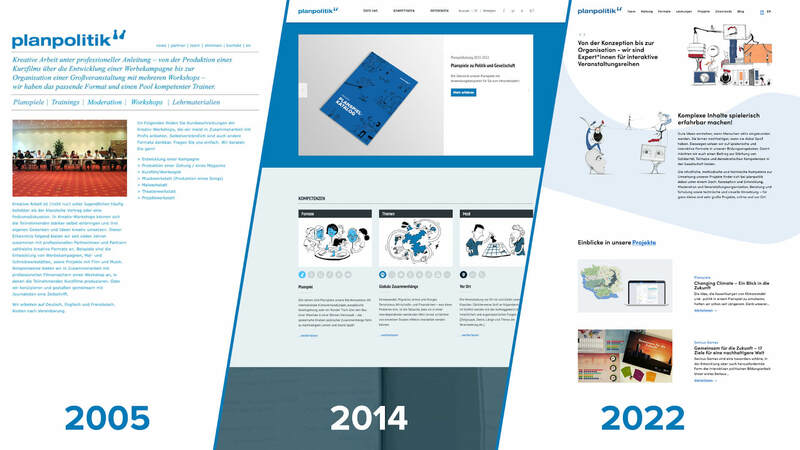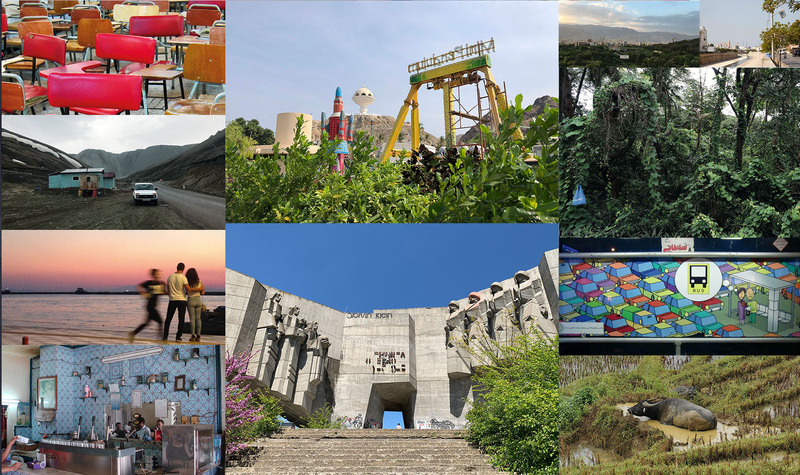10.10.2022
Task- and competence-oriented work, separation between business and service circles, no hierarchies qua positions, self-organisation in the circles, pull instead of push principle in management - these are some of the catchwords that accompany us on the way to a peer governance system based on consent. The exact form this will take will only become clear along the way. But it is already clear that it is an exciting process that will change a lot at planpolitik.
But how did it all begin? The impetus came from several directions: The challenges and upheavals caused by the pandemic, the departure of some long-standing staff members, but also the wish expressed several times to define and divide the tasks at planpolitik more clearly. This meant that the structures at planpolitik, which had grown very organically over a long period of time, had to change. In a very participatory process typical of planpolitik and with the excellent advice of Sabine Leukert, we then approached the idea of organising our work in circles in the future.
The decision for the circle method as the future basic structure was made jointly by the team in the so-called consent procedure - another exciting innovation and a procedure that we generally want to use in the future for larger decisions. In this way, we ensure that everyone in the team is prepared to support groundbreaking changes and at the same time prevent too much discussion and too few decisions.
The adaptation of the circle model to our planpolitik world has only just begun, but four central changes are targeted in any case:
- Clearer division of competencies and tasks: So far, everyone at planpolitik actually does everything - organisation, communication, administration, development and implementation. In the future, these tasks will be more clearly divided among different groups, whose members can then concentrate on the respective tasks. This concerns, for example, the development of new workshop materials or the implementation of events. In other circles, organisational and administrative tasks or communication with clients, teachers and freelancers will be bundled. In the so-called steering groups, policy-wide capacity planning is made and personnel and strategy issues are dealt with.
- Dissolution of the content teams & formation of a joint development circle: Our content teams "Democracy & Society", "Europe" and "Climate, Sustainability & Global Politics" have been working very independently for a long time but have also distanced themselves from each other and partly developed their own processes and approaches. We want to dissolve this division. Projects can then be worked on in new and changing team constellations. This will make us more flexible and innovative in terms of content, and staff will be able to contribute their content-related and methodological competences even better. We also hope to achieve greater efficiency by standardising processes and templates.
- Self-organisation of the circles: Instead of working according to rules imposed from above, the development and implementation circles should organise themselves to a large extent and also determine themselves how they make decisions. At the same time, they demand support and guidelines from the service and steering groups where and when they need it.
- Forward-looking capacity planning: In the recent past, we have had a number of cases of staff being overworked, which has led to absenteeism and, unfortunately, in some cases to the termination of employment. The reasons are different for each individual, but one lesson learned is that we have to plan the capacities of our staff more preventively and with more foresight. This also includes distributing responsibilities in such a way that no one feels irreplaceable and that we take countermeasures at an early stage in the event of overload. Another innovation in this context is the decision to elect two ombudspersons from among the staff.
We are already in the midst of this radical change. At a team day, agreed on the objectives of the overall process together and felt a generally very positive atmosphere. We have identified six pilot projects that will bring us closer to the goals mentioned and have put together teams that feel responsible for the respective projects.
Some of them are quite easy to implement - such as the election of ombudpersons - while others require a lot of creative energy, e.g. when it comes to setting up a uniform enquiry and offer management system or when the organisation of the numerous events should no longer come from at least 10 hands but from one.
In a few months we will see where we stand and make adjustments again if necessary. What is certain is that the restructuring along the core ideas of the circle model will not simply end at some point. Instead, we are in an ongoing process, the end of which we can only guess at. But the direction is right. We will report regularly on the progress here.
Similar posts from our Blog

10.10.2022
Welcome!
We're glad you made it this far! We sincerely hope that you like our new homepage. We have put a lot of work into it... After all, we have covered all the steps internally: from...

30.05.2023
Around the world in 18 years
50 countries in 18 years - from Luxembourg to Indonesia, from Finland to Ethiopia. And all on behalf of political education work! Holidays in other countries are a great thing for many people. But for...